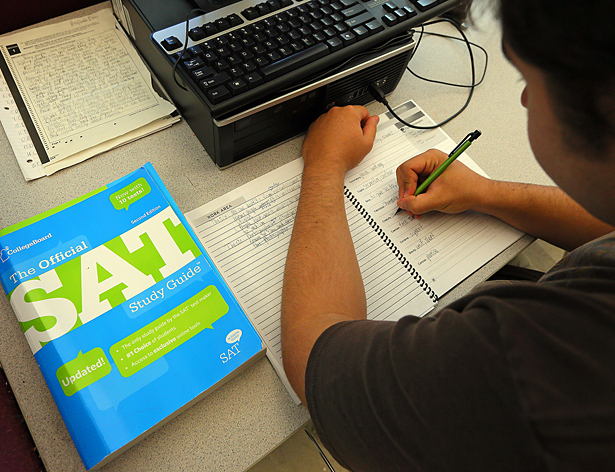 Ask college admission officiers, what’s the single biggest application killer and most will tell you it’s a low overall high school grade point average followed by lagging grades in college prep courses. A lot SAT or ACT score comes in third as the quickest way to get rejected from a selective school.
Ask college admission officiers, what’s the single biggest application killer and most will tell you it’s a low overall high school grade point average followed by lagging grades in college prep courses. A lot SAT or ACT score comes in third as the quickest way to get rejected from a selective school.
That’s according to a Kaplan Prep survey of 350 admission officers at the top 500 universities. The survey results show that 37% of the admissions officials identify low high school GPAs as No. 1, 28% checked off low grades in college prep classes, while 18% put their finger on low SAT or ACT scores.
Truth is, it’s often a combination of factors that get prospective students rejected from target schools. At the highly selective universities, SAT scores loom large because they are the single best comparative element of an application. GPAs are subject to grade inflation and are less easily compared from school to school.
AT MOST SCHOOLS WITH HIGHLY RANKED UNDERGRADUATE PROGRAMS IN BUSINESS SATS ARE UP
In general, the relative importance of test scores depends on which college to which you are applying whether you seeking scholarship money. Many schools, including those that deemphasize test scores, still use them to award merit aid scholarships. In any case, all the top business schools, which have extremely competitive admissions, care a lot about scores.
So what can you tell by looking at average SAT scores at the top 50 undergraduate programs in business? They are going up, in many cases, way up, making it ever more competitive to get into a top ranked business school. At the Wharton School, the No. 1 program, average SATs are up 22 points to 1466 in the past three years alone (we’re using the older scoring method in which a 1600 is a perfect score not the current 2400). That’s considerably above the 1050 average for the test.
But many other schools have been reporting far more substantial increases in the average, owing to the explosion in the popularity of the business major. Southern Methodist University’s Cox School and Case Western University’s Weatherhead School have both increased their SAT averages for incoming classes by more than 100 points each in the past three years. At SMU, average SATs ballooned to 1414 in 2013, up 134 points from 2011, while at Case Western, the average rose to 1369, up 109 points in the past three years.
SAT INCREASES & DECREASES: A PROXY FOR THE RELATIVE HEALTH OF A SCHOOL
In most cases, the increases were significant but not nearly as daunting. Northeastern University had a 55-point increase in average SAT to 1384 last year, while Michigan State University reported a 63-point jump to 1190 (see our tables on the following pages for the latest average SAT scores plus three year historical trends).
SATs also are a great proxy for the health of a given school. Obviously, programs that are increasing their average SAT scores are generally increasing the quality of their student populations. They are raising the bar for entry and increasing the likelihood that the prestige and reputation of the school will continue to rise. Schools that are finding it harder to get the best candidates are are the other side of this equation.
Our analysis of SAT averages at the top 50 business schools shows decreases at Syracuse University (a 41-point decline in three years), Penn State (a 17-point fall), New York University (a 13-point drop), and the University of Michigan (which had a slight nine-point decline in the past three years).
The undergraduate business program with the highest average SAT? It’s Washington University’s Olin School of Business where the average was 1480. The lowest for a top 50-ranked business program? It’s 1175 at Texas Christian University’s Neeley School. Generally, though, the highest ranked schools predictably have the highest average scores.
(See following page for average SAT scores and trend data at the top 50 undergraduate business programs)











Questions about this article? Email us or leave a comment below.